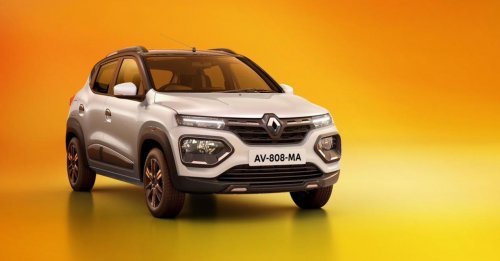
Despite making significant investments in its manufacturing facility in India, Renault has remained a niche player. Now it aims to capture 5% of the market with the help of its latest product – the Kwid, aimed at the most competitive segment of the market. We talk to Renault’s global Chairman and CEO, Carlos Ghosn, to get a more detailed understanding of what the company is looking to achieve in India.
Would you be looking at other vehicles based on the Kwid’s CMF-A platform? And is there any plan for larger engines too?
What I can tell you is that the platform is ready for many cars – for Renault and for Nissan. Now it depends on the demand we get to see, the reaction of the market, and our colleagues at Renault India who will direct us on what other kinds of products they need. We’ve started with what you would call a bread-and-butter product, which is powered by an 800cc engine – because the pricing of the car is obviously very important. There are a lot of things we want to equip the car with, but at the end of the day we have to make choices with regards to what’s important and what’s not. By putting more equipment or a larger engine, we would have priced ourselves out of the market – that’s why we’re being very careful to remain relevant in this segment. And relevancy is around the Rs. 3 lakh mark. If you’re above the Rs. 3-4 lakh mark, then it’s over – you’re not relevant anymore.
The design of the Kwid is the key differentiator for Renault in this segment. Don’t you think having more options, such as another engine or the option of an automatic gearbox could have been other differentiators?
Yes, the design is a differentiator. But let’s not forget that the Kwid’s fuel efficiency is going to be best in its segment. When you look at the interiors of the Renaut Kwid, and the boot space, that too will be at the top of its segment – and that too is important. As you know, in India people use all of the seats in a car – even in such a small car. Outside India, the rear seat usage is 15% of the time. But, in India, it’s much, much higher than that. There will also be the navigation system with touchscreen and Bluetooth functionality, which doesn’t exist in the segment currently – and we’ll also have an optional airbag available, which is not available in any other products in the segment. So, we’re offering a lot to customers. There are many other differentiators for the Kwid, other than the styling.
You mentioned that from time-to-time you were told that things you were asking for were not possible. What were these parameters, and why were you told that they weren’t possible?
You know when Ratan Tata launched the Nano, I was the first person to say this is serious. Not just about the Nano per se, but about the segment – of offering a real car at a very, very affordable price. This is a global need. And, obviously, when you’re talking about a global need, first you need to test it in a competitive market – and what more of a competitive market can you find for a car of this kind than India? If you can make it succeed in India, then you can make it succeed anywhere else. So, we started at that point of time to say that we needed to do something, we needed our car to be priced very reasonably – but without any compromise on the aspects that matter to the target consumer. So, we’ve been looking for the solution. You know very well that the Indian car market is a very complex market – it’s not something that any manufacturer can crack, as you need to learn and find your way by trial-and-error. So, yes, we started on this project a few years ago and we’ve been working very hard. And we came to the conclusion that we needed a new platform to execute this, and we created that. But, the new platform needs to capture all the frugality and creativity in a frugal way that exists in India with the expertise of two global car manufacturers already existing in the country – who need to try to launch their own versions of this car in a price band of Rs. 3-4 lakhs. So, in a certain way, this platform is an expression not only for giving Renault a means to go for the 5% market share target, but also preparing a completely new line-up for the Renault-Nissan Alliance aimed at a lot of other markets too. Because there are a lot of people who want their own personal car – but they don’t want a compromised vehicle like half-a-car, or something based on very old technology. They want something modern, with the basic features, and at an affordable price – and this is a need existing everywhere in the world.
In the past, the quest for frugal engineering has lead to a lot of thought but very little action. How has that been avoided in the Kwid’s case?
Frankly, I think how we avoided distracting ourselves from our main objective of making the maximum car with the minimum of resources is that we’ve been extremely demanding on the design-to-cost ratio – and this has been realised thanks to the strong will and stubbornness of our team in India, led by Gerard Detourbet (Renault-Nissan Alliance Global Vice President). I told him he needs to make a car that, at a selling price of Rs. 3 lakhs, is still a real car – not something that people can find compromises with. We wanted a real car for this kind of price, and we wanted it to be attractive. We wanted to be proud of it. He has been working very hard on it, and I can tell you that the people working with him recognise the fact that it’s been a demanding project for many years. A lot of our engineers based in Tokyo or France said this was not going to happen. Many times I was told this was not going to be successful, and, yes, from time-to-time we hit some bumps – and they turned around and said, ‘see, we told you it wouldn’t work.’ Making an engine and transmission at the target cost, making a good looking design at the target cost – everything was considered as beyond the reasonable limit. But we feel very good about the product we’ve come up with. And to say that we’ve come up with a car within a selling price range of Rs. 3-4 lakhs with all the attributes of a proper car, and making it a good looking, attractive car at this price point with the targeted fuel efficiency and space for five people inside makes me think that our team has done a great job. For many years, they’ve been surrounded by a lot of scepticism. But they’ve made it, and I think they’ve done a great job with the product.
























Write your Comment